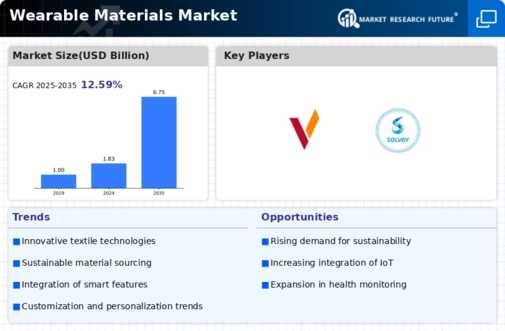Market Analysis
In-depth Analysis of Wearable Materials Market Industry Landscape
Wearable material market dynamics are undergoing significant changes brought about by the spread of wearable devices across different industries over time. These. These include smart watches, fashion watches, and fitness bands. A key market driver includes expanding health consciousness among consumers, which has resulted in huge demands for wearables seen not only through healthcare but also among industrial workers who prefer these gadgets over traditional ones for self-monitoring purposes. Smart textiles have had a lot of influence on how wearables operate. The integration process requires specific properties such as flexibility, breathability, and washability. Smart garments that can monitor the activities of the body and give real-time feedback are developed using sensor-based fabrics. Furthermore, the wearables materials market is rapidly evolving due to their growing adoption by industries such as medical, sports, and manufacturing. In healthcare, wearable devices with biometric sensors and soft, skin-like materials enable medical professionals to continuously observe the health conditions of patients, which could result in early detection of diseases and even remote care for chronic patients. Market dynamics for wearable materials are influenced mainly by consumer electronics. The need for sleek, fashionable wearables has seen manufacturers work on new stuff that suits both fashion and design needs, as well as comfort. Market research helps firms listen, identify, and respond to customers' needs. However, there are challenges in the market for wearable materials, including environmental concerns about e-waste and the need for sustainable and biodegradable materials. The life cycle of a wearable device is decreasing due to technological advances; hence, attention has shifted to eco-friendly materials that can be responsibly disposed of or recycled. Additionally, the study and developments that were carried out contribute to changes witnessed in the dynamics of the wearable material market. This is done through continuous enhancement of features such as flexibility, stretchability, and conductivity of these materials so that they can be used in emerging designs as well as for desired functionalities like those required by wearables.






Leave a Comment